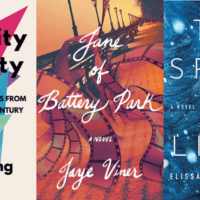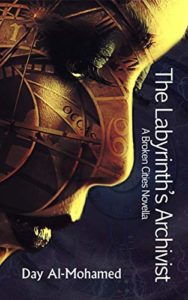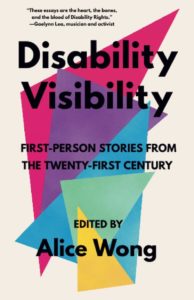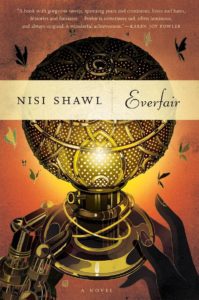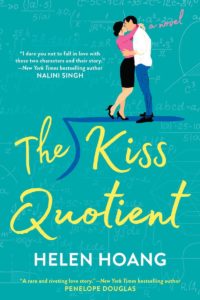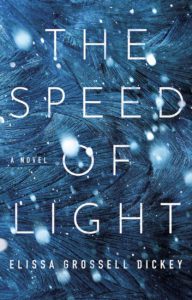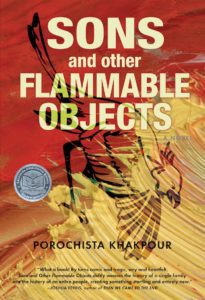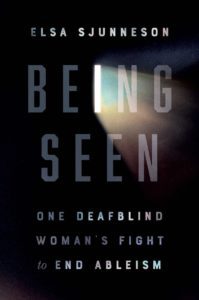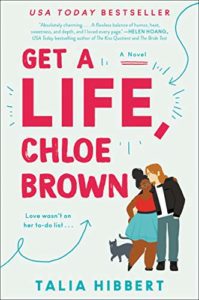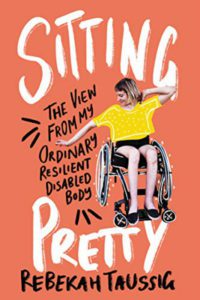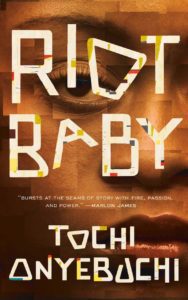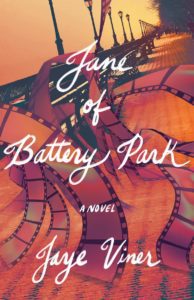This year, the Americans with Disabilities Act (ADA) turned thirty-one. A great many wonderful things, like curb cuts and electronic doors, have become (mostly) regular parts of life due to the ADA and the advocates who continue to push for its enforcement. However, as much of the pandemic has illustrated, society is still resoundingly ableist, meaning it operates on assumptions about ability, productivity, presentation, and communication norms that devalue and marginalize disabled people. For many, including myself, the demands of daily life mean that creating art must be borrowed from already strained resources. If disabled artists manage to complete art, we face new barriers from gatekeepers who assume that this art is not a viable investment, that it will not appeal to consumers, that the creator will be too difficult to accommodate.
In the book industry, disabled authors are often stereotyped into writing narratives of disability, most often creative nonfiction and memoir, that serve to “teach” society about the lives of disabled people. Instead of artists, they become representatives of their alien species from which society evaluates authenticity, pities, and is inspired by their true lives.
This is not that kind of list. The below books are not all obviously books about disability, but they are all written by authors who identify as living lives outside the ableist norms of society. It does not matter what diagnoses we do or do not have. It does not matter if you think we are “disabled enough.” Our experiences are not up for debate, evaluation, or instruction. The books on this list took a difficult road entering the world because society is set up for disabled artists to fail. These books deserve your attention on the basis of being quality writing. The authors deserve your support because we are artists.
***
The Labyrinth’s Archivist by Day Al-Mohamed
This fantastical murder mystery dives into a magical waystation where information on hundreds of worlds is curated by the archivists, specially trained gatekeepers who not only safeguard languages and cultural knowledge, but also poisons, artifacts, and biological agents, all of which come into play in this race against time to find the murderer before the labyrinth becomes vulnerable to outside influence—or worse, government take over.
Disability Visibility: First-Person Stories from the Twenty-First Century edited by Alice Wong
As a disabled person, I am always watching media for people who share my experience in particular ways. This is probably because I have lots of symptoms with no diagnosis or treatment plan, so representation is a possible way of me finding answers. This essay collection was the first time I encountered not one, but two, people writing about lives like mine, so of course I love it. The range of essays, genres, and voices is also of particular interest because it gives a broader sense of the culture and interconnectivity of disability from clothes to performance art to work, parenting, and relationships with pets. It is rare to find an essay collection encompassing such a diverse group of people.
Everfair by Nisi Shawl
Expansive, imaginative, and thought-provoking, this Victorian steampunk alternative history imagines a free state within the Belgian Congo, desperately fought for and defended by an alliance of Africans, Europeans, East Asians, and African Americans. Not only does it reframe narratives of colonialism and twentieth-century events, it gives voice to peoples who otherwise have been voiceless in other narratives of the time and gives them the power over natural resources, technology, and state-level politics that is only briefly addressed in the similar situation of Wakanda in The Black Panther, to ask intriguing questions about what could have been.
The Kiss Quotient by Helen Hoang
In this gender-bending, Pretty Woman-esque romance, an econometrist and a male escort fall in love even as they try to keep their relationship professional. The sex scenes are scrumptious, the family dynamics surprising and lived-in. It is an old story with a new kind of cast that expands the possibilities of what love can be. I personally enjoyed the level of detail about clothes design and our human experience of being dressed beings.
The Speed of Light by Elissa Grossell Dickey
This dual-timeline novel follows a year in the life of a woman with multiple sclerosis. Pressed into the stress and anxiety of her recent diagnosis, the protagonist, Simone, worries about all that she has lost, and what else she could lose—including Connor, who just might be the love of her life. It is a story about the strength of family and friendships, about claiming a new future and letting yourself be loved as you are.
Sons and Other Flammable Objects by Porochista Khakpour
Khakpour has written novels and essay collections since this debut, but it is a great place to start reading her work. Part myth, part immigrant saga, this novel is an intimate examination of the relationships between fathers and sons, of the small fissures that split families apart, the quiet drama of generational divides that weather those fissures, all set in the backdrop of 9/11. The situation with the father and the resident cat has stayed with me. As a cat person who also loves birds, it was both hilarious and disturbing.
Being Seen: One Deafblind Woman’s Fight to End Ableism by Elsa Sjunneson
From our perceptions of Helen Keller to the horror movies we watch every day and nearly ever cultural touchstone in between, Sjunnerson challenges our assumptions and long-held ideas about disability. This book is both memoir and rhetorical exploration of the ways disability is formed by social norms, how those norms influence the lives of individuals such as Sjunnerson, and how they act to shape widespread attitudes towards disabled people. A must-read for everyone wanting to expand their way of seeing our world.
Get a Life, Chloe Brown by Talia Hibbert
This UK rom-com is one of those delicious frenemies to lovers stories with two vibrant characters full of their own biases, desires, and insecurities. British class dynamics compound the problems these two must work through for their relationship to work. In a reversal of the average rom-com, it offers a nice structure of the woman making a bucket list for herself to get out of her regular routine, and the man helping her to cross things off that list.
Sitting Pretty: The View from My Ordinary Resilient Disabled Body by Rebekah Taussing
This is a memoir about a teacher, woman, wife, mother who lives in Kansas City and uses a wheelchair for most of her mobility. I found this book because I was considering attending the Kansas Book Festival and Taussing was the keynote speaker, with her book plastered all over the website. I chose to read the book because I’m a disabled author who knows just enough about disability beyond my personal experience to know how little I know. I read this book because I wanted it to teach me about life using a wheelchair. And it does that, but most of all, it gives a nuanced and complex glimpse into the experiences of being visibly disabled in a world based on ableist assumptions. You’ll have no idea how many of these assumptions are made until you read this book.
Borderline by Mishell Baker
In this speculative novel, a woman becomes involved with an enforcement agency monitoring paranormal creatures from a parallel universe. These creatures are responsible for feeding the creativity of Hollywood. Part detective noir, part exploration of power and corruption in the film industry, this book starts fast and ends faster, and leaves us thinking about how all those bad movies we have now might’ve been better if a fae had been behind the scenes. This book is a fantastically fun thinkpiece. Now, anytime I watch a particularly boring movie, I find myself wondering if the fae went on strike.
Riot Baby by Tochi Onyebuchi
Riot Baby is another a speculative novel grounded in our world. Ella has superpowers (like X-Men) which she struggles to use to protect her brother, Kev, from the forces of institutional racism that claim his life almost from the moment he is born. This narrative about the limits and responsibilities of special powers in the face of powerful institutions demands a thoughtful consideration of the possible futures of America and what can be done to stop them.
And to close out this wonderful list, we just had to include Jaye’s debut novel, Jane of Battery Park, out now from Red Hen Press! – Ed.
Jane of Battery Park by Jaye Viner
Jane is a Los Angeles nurse who grew up in a Christian cult that puts celebrities on trial for their sins. Daniel is a has-been actor whose career ended when the cult family members nearly killed him for flirting with her. Eight years after a romantic meet-cute in Battery Park, both search for someone to fill the gap they imagine the other could’ve filled if given the chance. Jane compulsively goes on dates with every self-professed expert in art, music, and food hoping they will teach her the nuances of the culture she couldn’t access in her youth. Daniel looks for a girlfriend who will accept the disabilities left from the cult attack. A loving woman will prove to Daniel’s blockbuster star brother, Steve, that he’s capable of a supporting role in Steve’s upcoming movie and relaunching Daniel’s career. When a chance encounter unexpectedly reunites them, Jane and Daniel not only see another chance at the love they lost, but an opportunity to create the lives they’ve always wanted. The only question is whether their families will let them.
